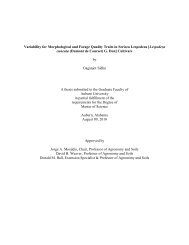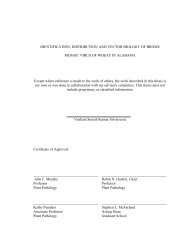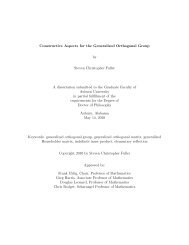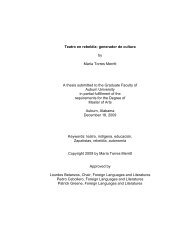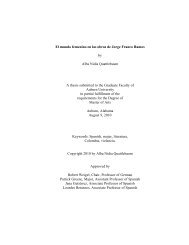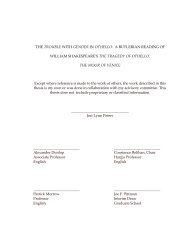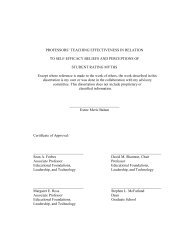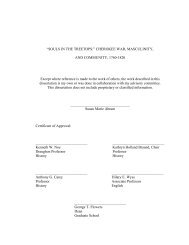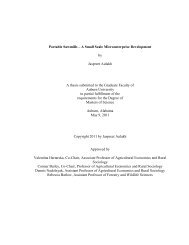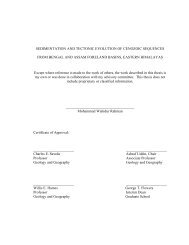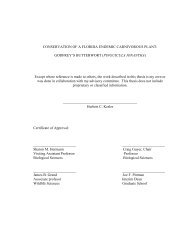Enhanced Polymer Passivation Layer for Wafer Level Chip Scale ...
Enhanced Polymer Passivation Layer for Wafer Level Chip Scale ...
Enhanced Polymer Passivation Layer for Wafer Level Chip Scale ...
You also want an ePaper? Increase the reach of your titles
YUMPU automatically turns print PDFs into web optimized ePapers that Google loves.
10. Final cleaning: After the passivation layer deposition, wafers were cleaned with alcohol,<br />
DI water, and blown dry <strong>for</strong> the next assembly steps.<br />
11. Solderball placement, reflow and singulation will be discussed in the following section.<br />
3.3 Preparation of SolderBrace Material<br />
With several years’ diligent work on the development of SolderBrace Material as the final<br />
WLCSP passivation layer, researchers from LORD have announced that this product is expected<br />
to be commercialized in the near future. However, at the initial stage of this research, a large<br />
number of test samples (see Table 3.3) having various chemical <strong>for</strong>mulas were investigated,<br />
tested, and compared to optimize the SolderBracing process.<br />
The introduction of silica into the polymer compound plays an important role in reducing<br />
the CTE and cure shrinkage. According to published literature, smaller size filler such as nano-<br />
silica should be more suitable <strong>for</strong> the photopolymerization process because it would not scatter<br />
the UV light and hinder the photo reaction [63]. However, this type of filler also has some<br />
negative effects on the underfill materials due to interfacial interactions and large surface areas,<br />
including inhibiting the epoxy cure, reducing the composite glass transition temperature (Tg),<br />
low density, high moisture absorption, and high viscosity at high loading level [20, 63]. In this<br />
research, particular difficulties were encountered with nano-silica filled samples were in washing<br />
the unexposed areas. The nano-silica tended to <strong>for</strong>m a "gel" which was hard to remove after<br />
developing. In addition, the CTE of nano-silica was not as low as regular silica. Larger size silica<br />
and high silica loading were found to be the preferred choice. Low CTE and low cure shrinkage<br />
were achieved with high loadings of silica.<br />
45





